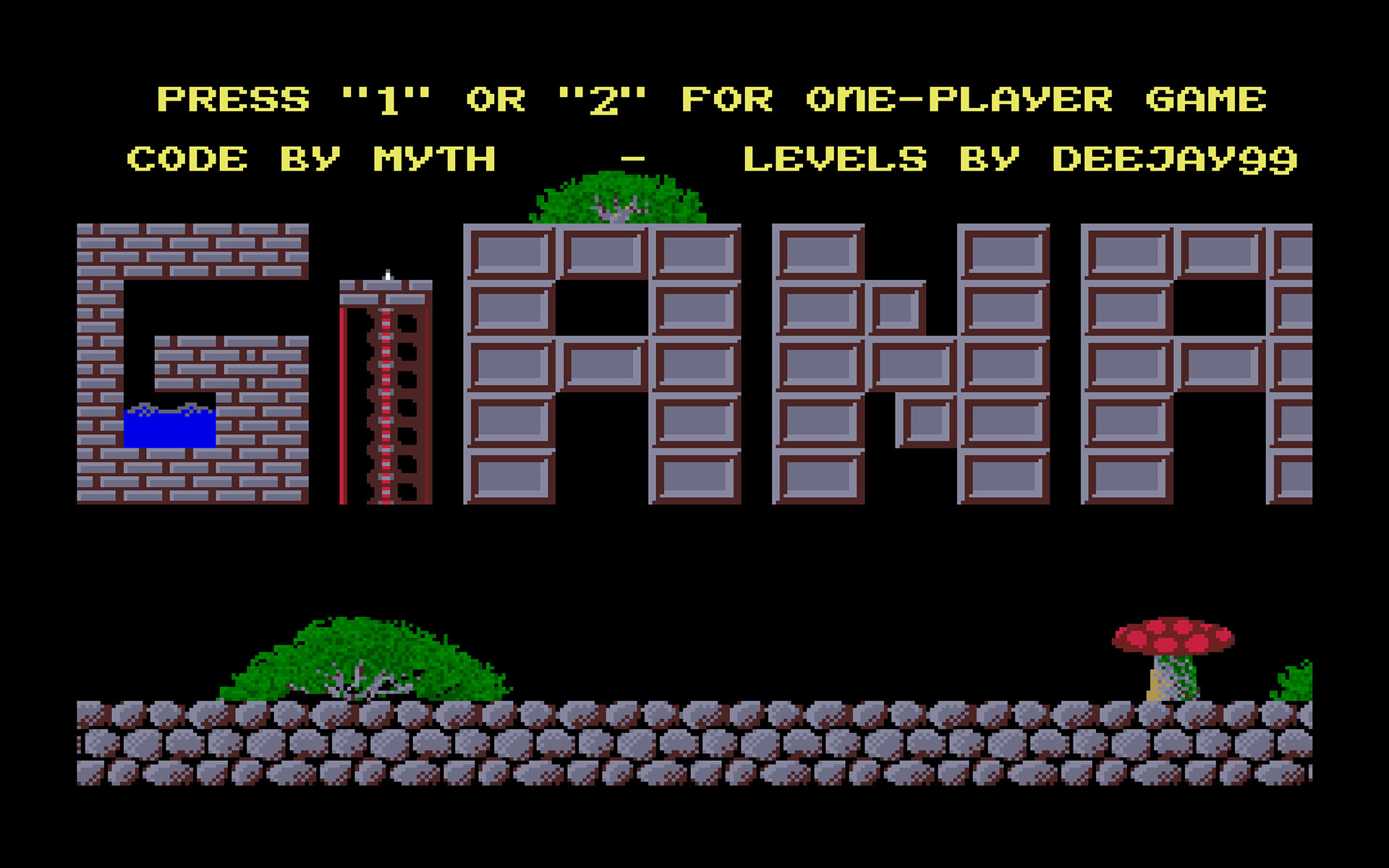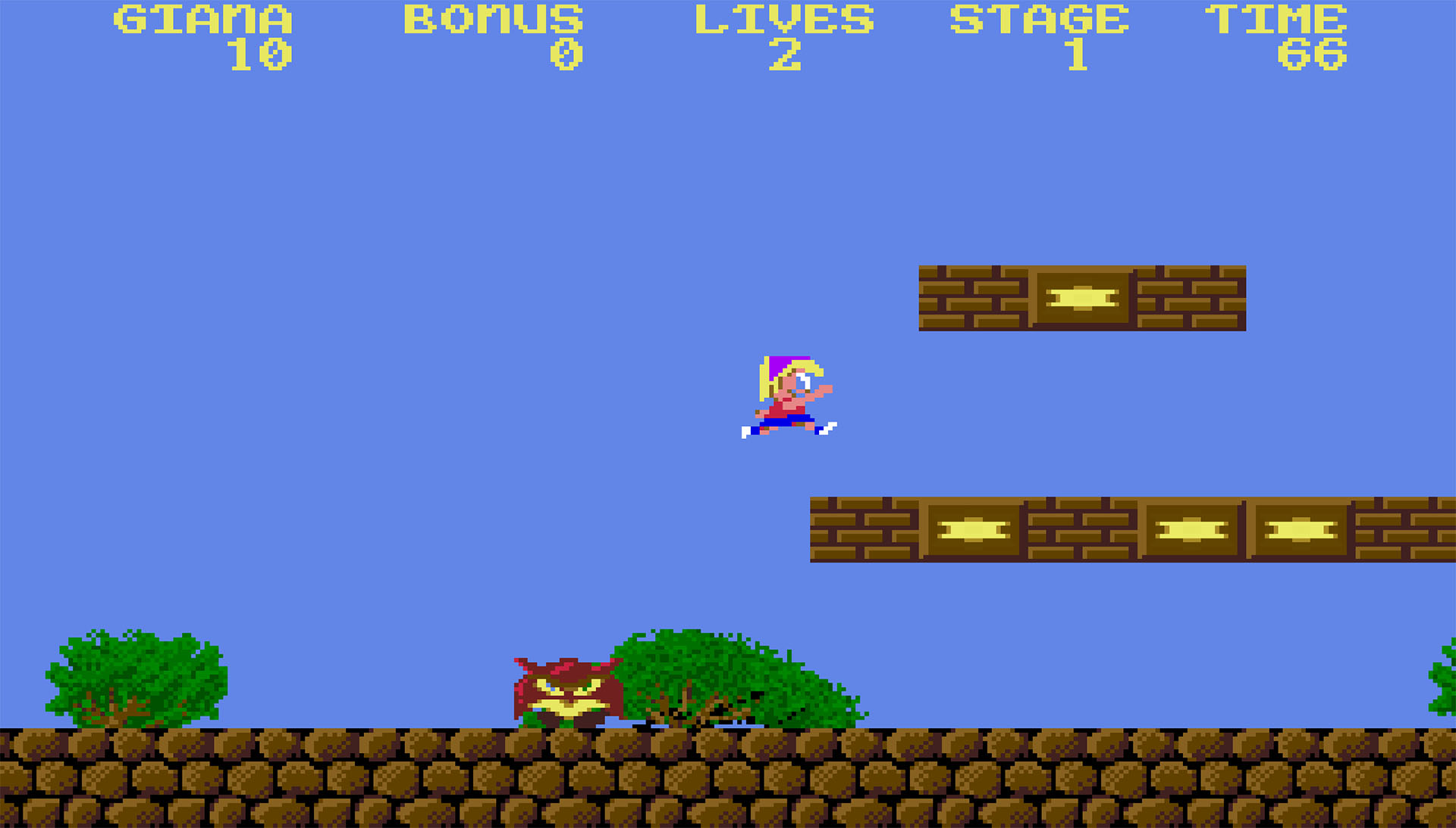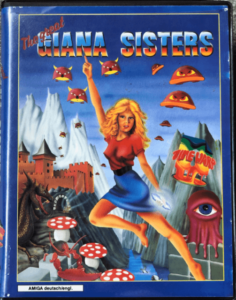The Great Giana Sisters: From Imitation to Innovation
In the vast realm of video games, few titles have left as indelible a mark as Super Mario Bros. This iconic game, released in 1985 by Nintendo, revolutionized the 2D action genre and set a benchmark for style, gameplay, and branding. It became a cultural phenomenon, propelling Nintendo to new heights and solidifying Mario as the face of the company. Naturally, such success led to a flurry of creative and shamelessly derivative imitations.
Not the ordinary imitation
One such imitation, a blatant clone, emerged in the late 1980s—The Great Giana Sisters. We herein give you the tale of a game that so closely mirrored Super Mario Bros. that it begged the question of how it managed to avoid legal repercussions. This feat is a story of ambition, emulation, and the fine line between homage and infringement.

During the 1980s, Nintendo’s NES console reigned supreme in the gaming industry, particularly in the United States. In contrast, the NES had a less significant impact in Europe, where an established home computer market and Sega and Atari maintained a strong presence. However, Super Mario Bros. did make its way across the pond and caught the attention of Marc Ulrich, the CEO of Rainbow Arts, a European game developer.
Ulrich recognized the absence of a game like Super Mario Bros. on home computers, which had more uncomplicated and less visually appealing games than Nintendo’s masterpiece. Sensing an opportunity, Ulrich assembled a team known as Time Warp Productions to create a game akin to Super Mario Bros. for the Commodore 64. Thus, The Great Giana Sisters was born.
However, it’s important to note that during the pre-NES era, Nintendo’s games were available on various platforms, including the Commodore 64. But after the NES’s overwhelming success, Nintendo terminated all licensing agreements with other hardware manufacturers, reserving its games exclusively for the NES. This position made The Great Giana Sisters one of the last games to feature Mario on a platform other than the NES.
Legally, however?
The similarities between The Great Giana Sisters and Super Mario Bros. were striking. From the scrolling left-to-right gameplay to the bricks, clouds, and bushes in the background, the game closely resembles its inspiration. Power-ups, hidden items, and even warp zones mirrored those in Super Mario Bros. However, the developers did try to differentiate their creation, giving the protagonists a female identity and altering the story to involve saving Gianna’s sister from an evil dragon.
Despite these alterations, it was clear that Super Mario Bros heavily influenced the Great Giana Sisters. The developers acknowledged this influence, referring to it as “The Management” dictating the graphical style. They exercised some freedom in level design but maintained a deliberate resemblance to Nintendo’s game.
Upon its release in 1987, The Great Giana Sisters garnered positive reviews and sold well. However, its success would be short-lived. Rumors circulated that Nintendo had taken legal action against the game, leading to its swift removal from store shelves. While the details remain murky, it is believed that Nintendo threatened legal action or reached an agreement with Rainbow Arts to cease distribution.
Interestingly, neither Nintendo nor Rainbow Arts or Time Warp Productions has openly addressed the removal of The Great Giana Sisters from stores. Speculation suggests that Nintendo’s legal position was strong, and the threat of a lawsuit prompted Rainbow Arts to comply. Alternatively, Nintendo may have recognized potential risks in pursuing legal action and decided to avoid setting an unfavorable precedent.
Legacy
Despite its abrupt disappearance, The Great Giana Sisters left an enduring legacy. The game’s soundtrack, composed by Chris Hülsbeck, is still considered one of the best on the Commodore 64. Its rarity and the “banned by Nintendo” backstory have made it a sought-after collector’s item, with its resale value surpassing the original price by several multiples.
The story of The Great Giana Sisters didn’t end there, though. It resurfaced in various forms over the years. In 2009, Giana Sisters DS was released for the Nintendo DS, serving as a reboot of the original game. The visually revamped Giana Sisters: Twisted Dreams arrived in 2012, and subsequent versions made their way to multiple platforms. The game evolved, distancing itself from its Super Mario Bros. inspiration and becoming a unique creation.

The journey of The Great Giana Sisters demonstrates the evolution of a game from imitation to innovation. While it initially courted controversy with its uncanny resemblance to Super Mario Bros., subsequent iterations and adaptations allowed it to establish its own identity. It serves as a testament to the influence and enduring appeal of Super Mario Bros. while also showcasing the capacity for imitation to pave the way for originality.
Ultimately, The Great Giana Sisters’ tumultuous history illustrates the delicate balance between imitation and infringement in the gaming industry. While imitation can lead to legal challenges and swift removal from the market, it can also catalyze creativity and innovation. The Great Giana Sisters is a cautionary tale, reminding developers of the importance of striking a delicate balance when drawing inspiration from established franchises.
So, as we delve into the rich history of video games, we must acknowledge the profound impact of Super Mario Bros. and its lasting influence on the industry. And let us not forget The Great Giana Sisters, a game that boldly ventured into the realm of imitation, faced the consequences and emerged as a symbol of resilience and adaptation.
We, the children of the 1980s, will forever hold The Great Giana Sisters close to our silicon hearts. The game defined us, and we wouldn’t have wanted it any other way.
Oh, two more things. If you prefer motion video, this guy on Youtube nailed it:
Finally, if you wanna play the game NOW (you do), we bring excellent news. Here is a perfect Giana Sisters emulator that runs without hassle in the browser and has entertained us at the office all week. Play to win!
The 1980s – It never ends
You gotta try this amazing link that teleports you to another random article. Try it!
